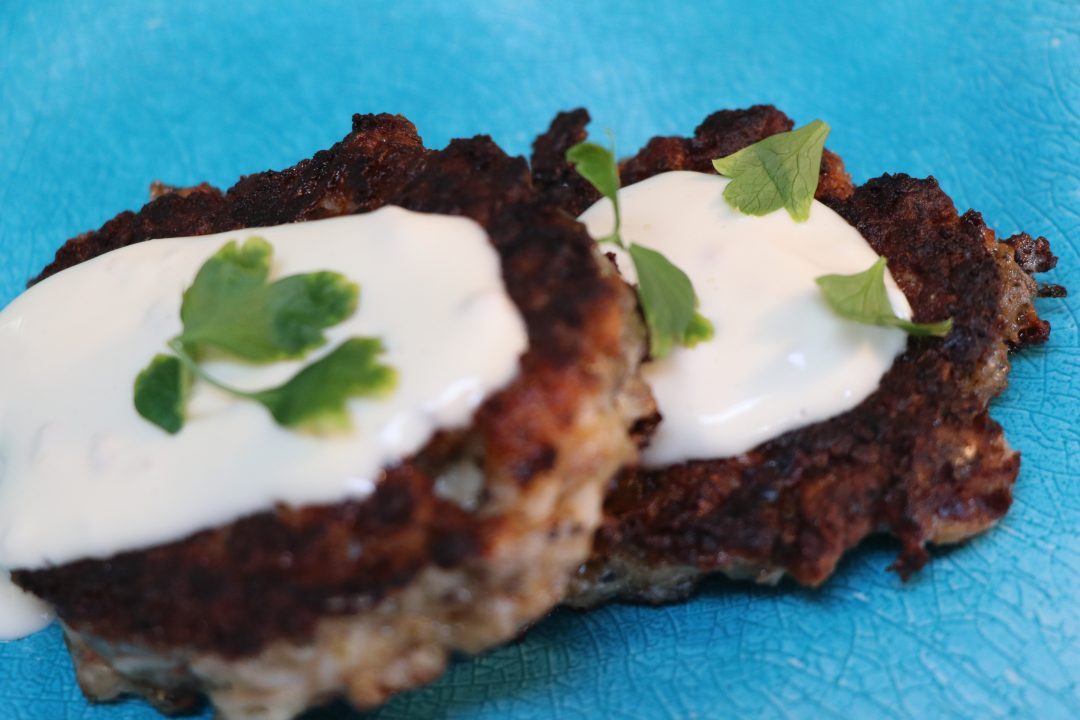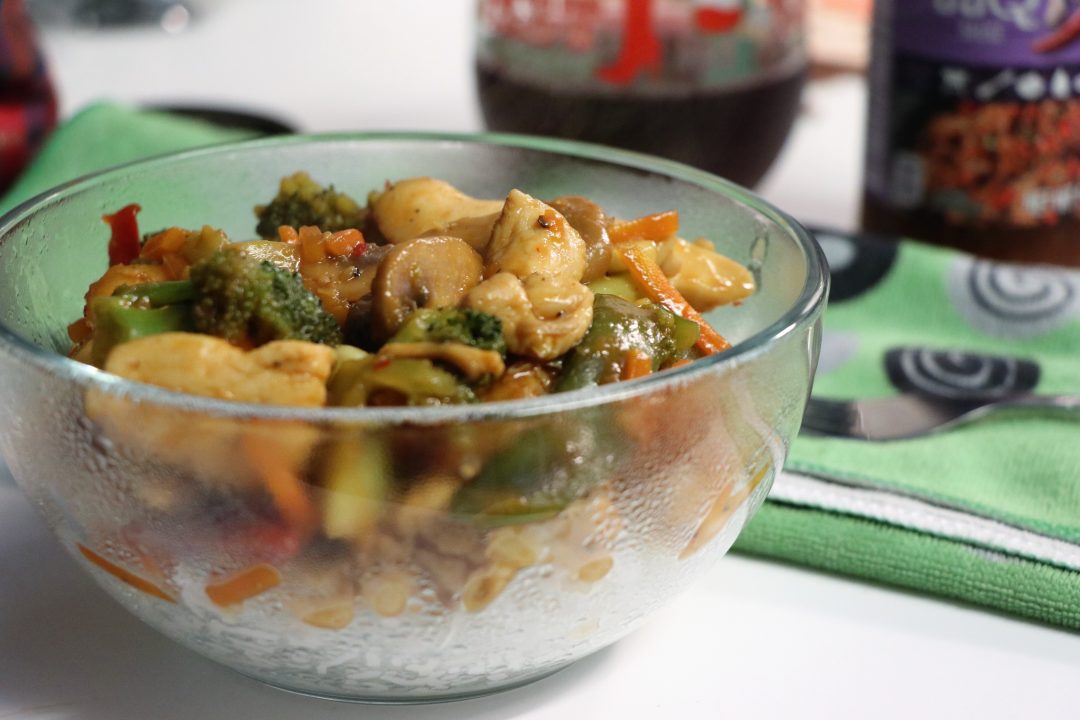You’ve seen both in stores, but what’s the real difference between tangerines and mandarins? Let’s peel back the truth.
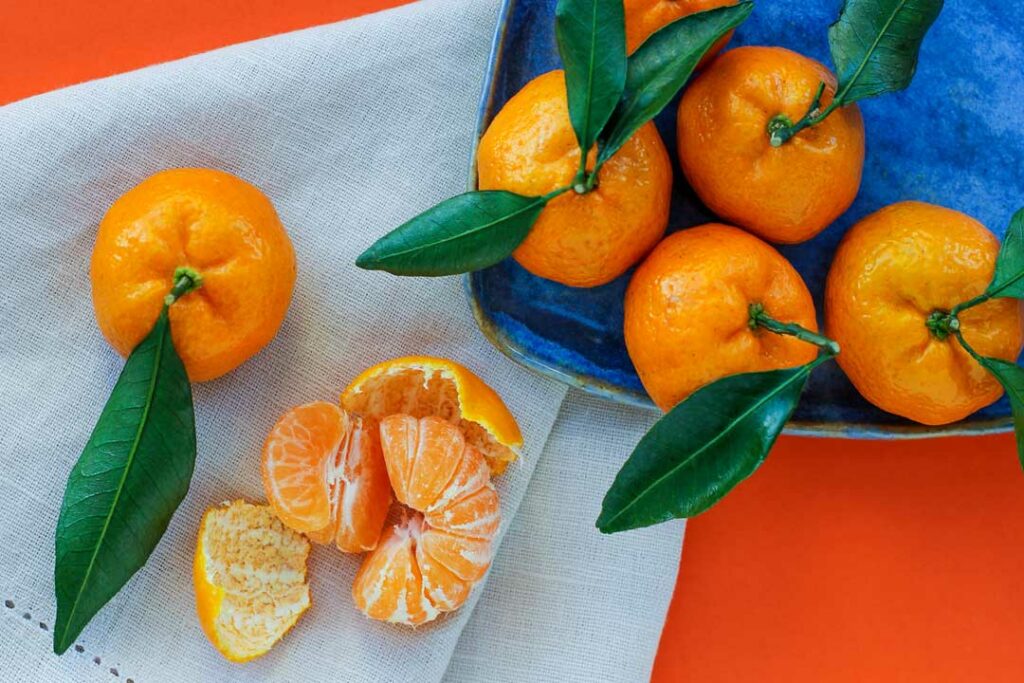
When browsing the produce aisle, you’ve likely come across both tangerines and mandarins, bright, sweet, and easy-to-peel citrus fruits that seem almost identical at first glance. But are they the same fruit under different names, or are there actual differences that matter?
To better understand the broader citrus category, check out this detailed comparison of Mandarin Oranges vs. Regular Oranges.
Tangerines vs Mandarins: How They Differ in Taste, Texture, and Use
In this in-depth guide, we’ll explore everything you need to know about tangerines vs. mandarins, including how they differ in taste, size, appearance, nutrition, and uses. By the end, you’ll be equipped to pick the perfect citrus fruit for your snacks, smoothies, kids’ lunchboxes, and recipes.
What Are Mandarins?
Mandarins are a type of citrus fruit that belongs to the same family as oranges, lemons, and grapefruits. Known for their sweet flavor, loose skin, and small size, mandarins are easy to peel and segment, making them a popular choice for snacking and children’s lunches.
They are believed to have originated in China and are one of the original citrus species from which many other varieties, including tangerines, have been developed.
Types of Mandarins
Mandarins aren’t a single variety; they are a category that includes several familiar citrus types:
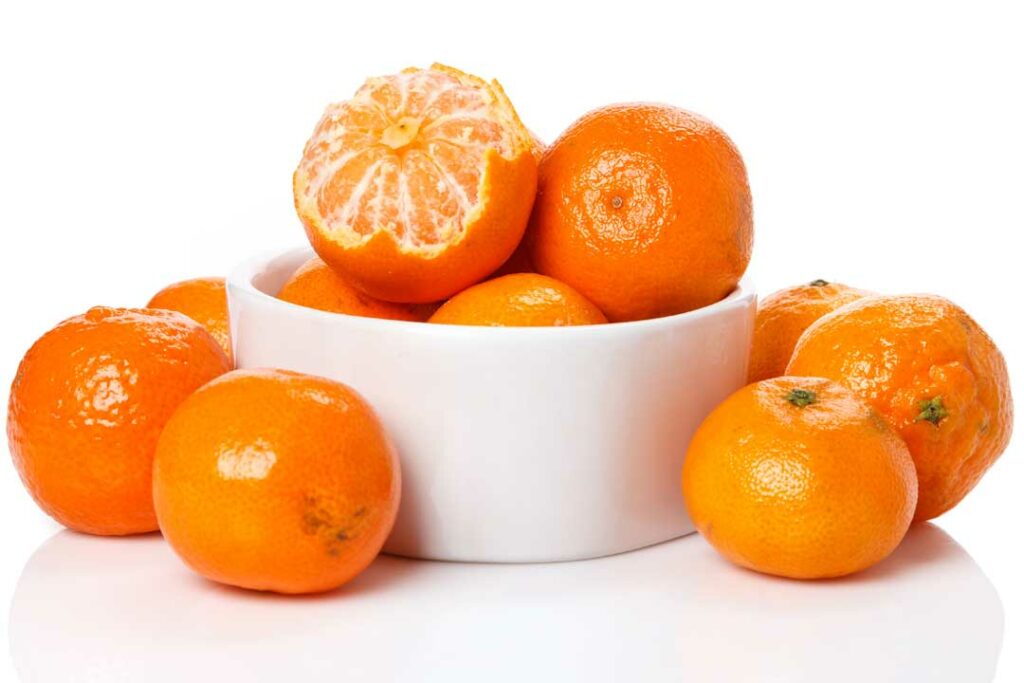
- Tangerines
- Clementines
- Satsumas
- Honey Mandarins
- Dancy
- Pixie
So in essence: All tangerines are mandarins, but not all mandarins are tangerines.
What Are Tangerines?
Tangerines are a specific variety of mandarin. They originated in Tangier, Morocco—hence the name “tangerine.” These fruits were imported to Europe and later to the United States, where they gained popularity for their bold flavor and deeper orange color.
Tangerines are typically:
- Slightly larger than other mandarins
- Richer in color—a deep reddish-orange hue
- Less sweet and more tart compared to clementines or satsumas
- A bit tougher to peel than clementines, though still easier than navels
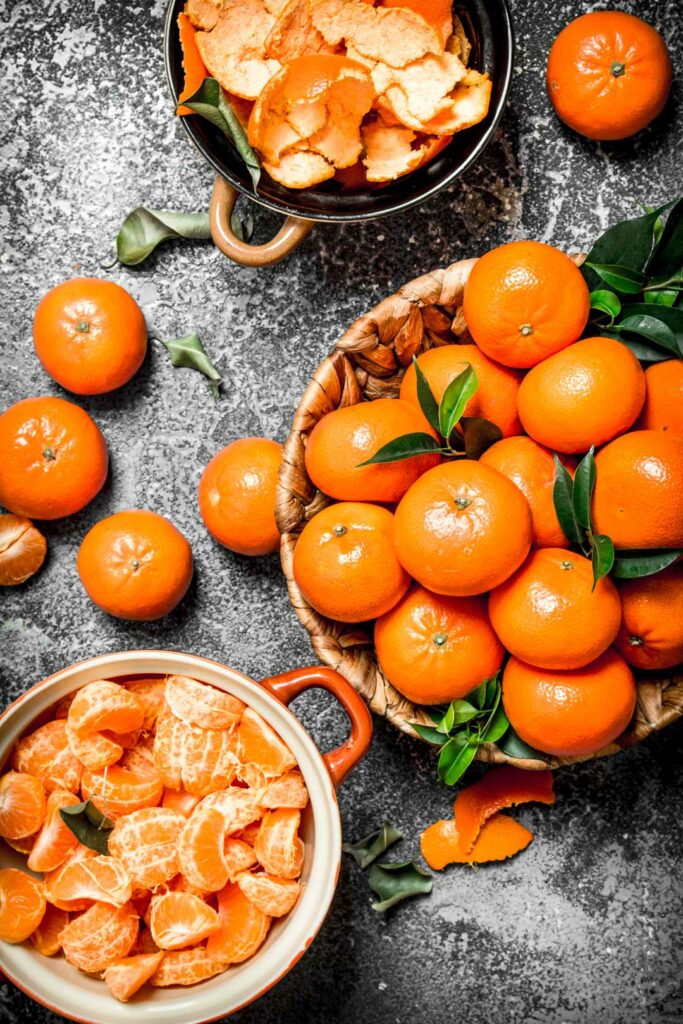
Tangerines vs. Mandarins: Key Differences at a Glance
| Feature | Mandarins | Tangerines |
| Category | Citrus species | Mandarin variety |
| Skin Color | Light to deep orange | Deep reddish-orange |
| Peelability | Very easy to peel | Slightly tougher skin |
| Taste | Sweet and mild | Slightly tart and tangy |
| Size | Smaller, flatter | Slightly larger, rounder |
| Seeds | Varies (Clementines = seedless) | Usually has seeds |
| Availability | Widely available | Seasonal (mainly winter) |
Taste and Texture
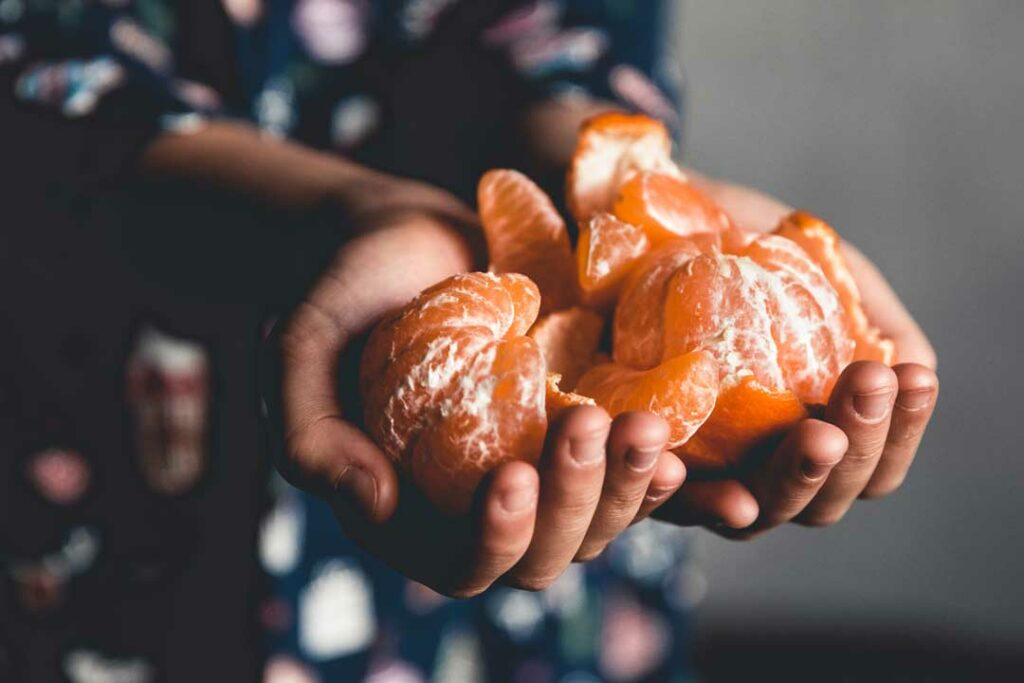
Mandarins
Mandarins have a mild, sweet flavor with a juicy texture. They’re often used in salads, desserts, and kids’ lunchboxes. Some varieties, like clementines and satsumas, are virtually seedless and extremely sweet.
Tangerines
Tangerines tend to be more tangy and intense, with a slightly thicker membrane around the segments. While still sweet, they have a more pronounced citrus flavor that stands out in sauces and marinades.
Culinary Uses
Because of their sweet, easy-to-eat nature, both fruits are commonly used in:
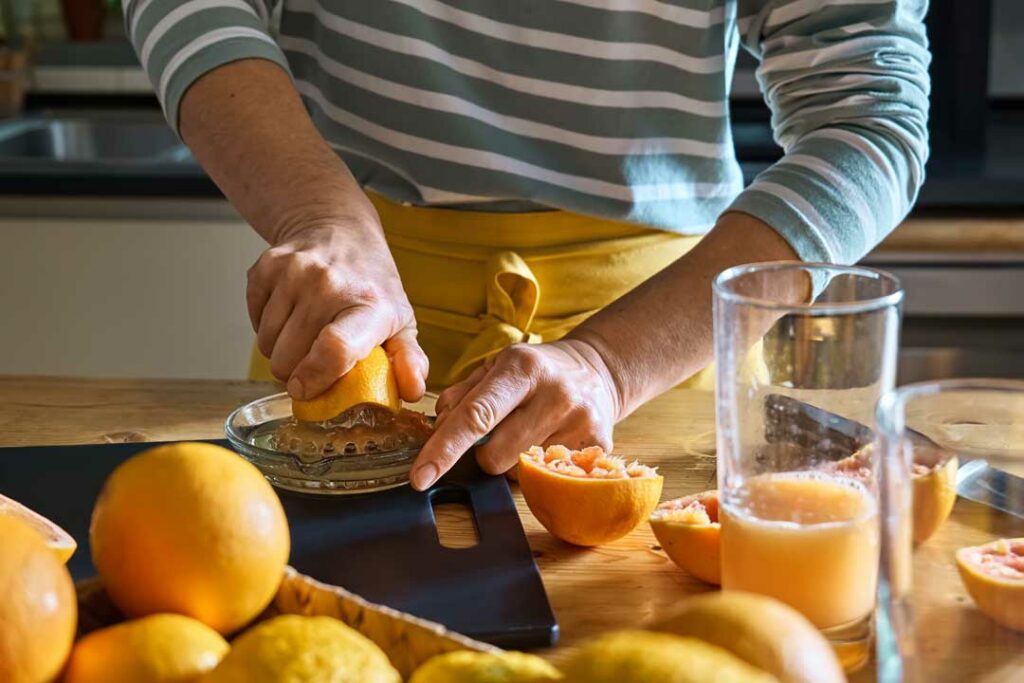
- Snacks and lunchboxes
- Salads and fruit bowls
- Desserts and sorbets
- Marinades and glazes
- Cocktails and infused water
However, tangerines are often preferred in savory dishes because their bolder flavor stands up well to spices and meats. Mandarins, especially clementines, are better for eating fresh or using in sweet applications.
Nutrition: Which One Is Healthier?
Both mandarins and tangerines are packed with vitamin C, antioxidants, and fiber, making them great additions to a healthy diet.
| Nutrient (per 100g) | Mandarins | Tangerines |
| Calories | 53 | 53 |
| Vitamin C | 26 mg (43% DV) | 27 mg (45% DV) |
| Fiber | 1.8 g | 1.8 g |
| Sugar | 9.3 g | 10.6 g |
| Carbs | 13.3 g | 13.3 g |
Verdict: Nearly identical in nutrition. Tangerines may have slightly more sugar and vitamin C, but the differences are minimal.
Availability & Seasonality
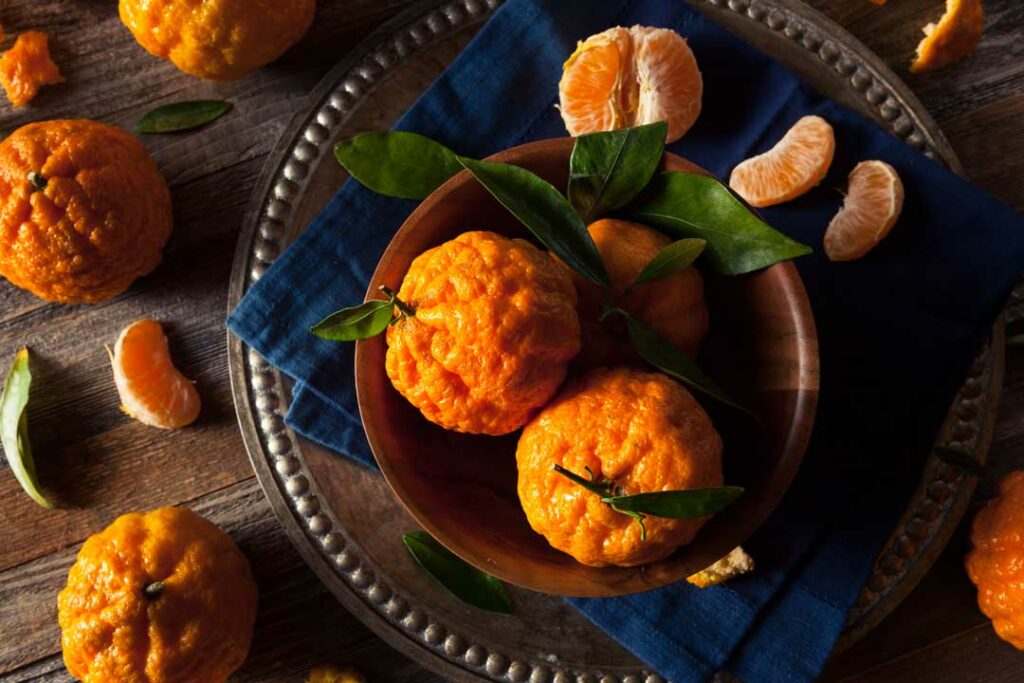
Mandarins
Different Mandarin varieties are available at different times of the year. For example:
- Clementines (Cuties/Halos): November–February
- Satsumas: October–December
- Honey Mandarins: January–April
Tangerines
Tangerines are typically in season from late fall to early spring, depending on the region. They may be harder to find outside their peak window.
Can You Juice Them?
Yes! Both tangerines and mandarins can be juiced, though mandarins (especially clementines) are favored due to their juiciness and mild flavor. Tangerines offer a more tangy, concentrated juice and may require straining due to more seeds.
Kid-Friendly Factor
For children’s snacks, clementines and other seedless mandarins are the top choices due to:
- Easy peel skin
- Small size
- Sweet taste
- Fewer seeds
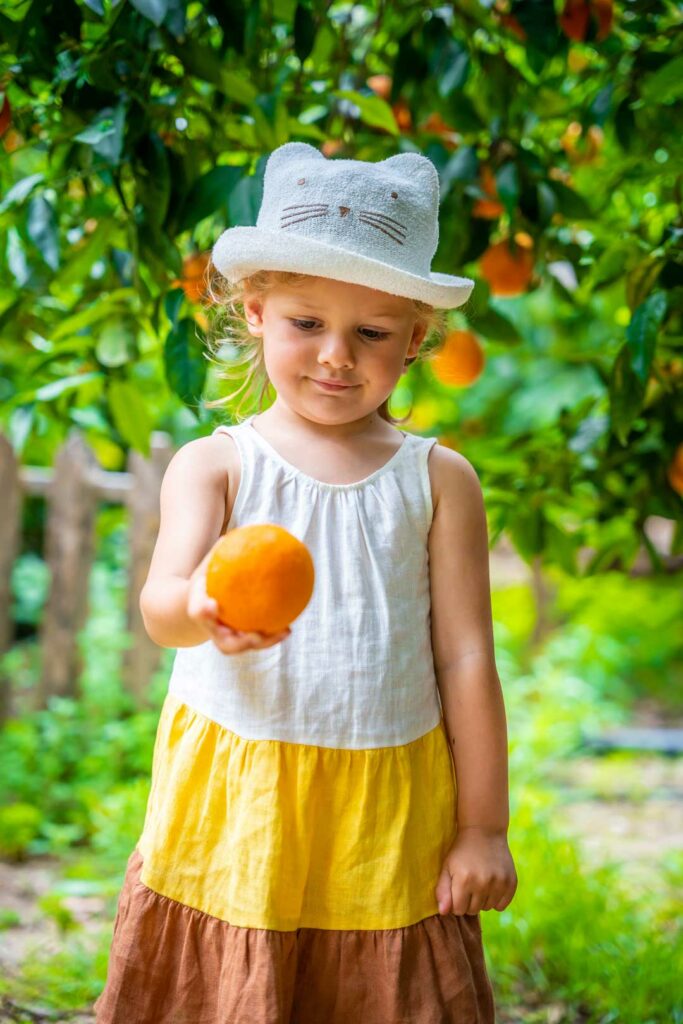
Tangerines can be a bit more of a hassle due to seeds and tougher membranes.
Growing & Origin
Mandarins are believed to have originated in China and Southeast Asia and were later cultivated in Japan and the Mediterranean.
Tangerines, specifically, trace their name to Tangier, Morocco, where they were first shipped from in the 1800s.
Both are grown in warm, subtropical climates, California and Florida being major U.S. producers.
Which Should You Choose?
Choose Mandarins If You Want:
- A sweet, seedless fruit
- Something easy for kids
- A fresh snack or lunchbox option
Choose Tangerines If You Want:
- A bolder, tangier flavor
- Fruit with a firmer texture
Something that holds up in cooking or glazes
Ultimately, it comes down to personal taste and purpose. Some people even prefer to keep both on hand for different uses, fresh mandarins for snacking and tangerines for cooking.
Buying Tips
- Look for firm, glossy skin with no soft spots or mold.
- Choose heavier fruits (they’re juicier).
- Check if the label mentions the variety (e.g., Dancy = tangerine; Clementine = mandarin).
- For kids or convenience, opt for pre-packaged Cuties or Halos—they’re always seedless and sweet.
Storing Your Citrus
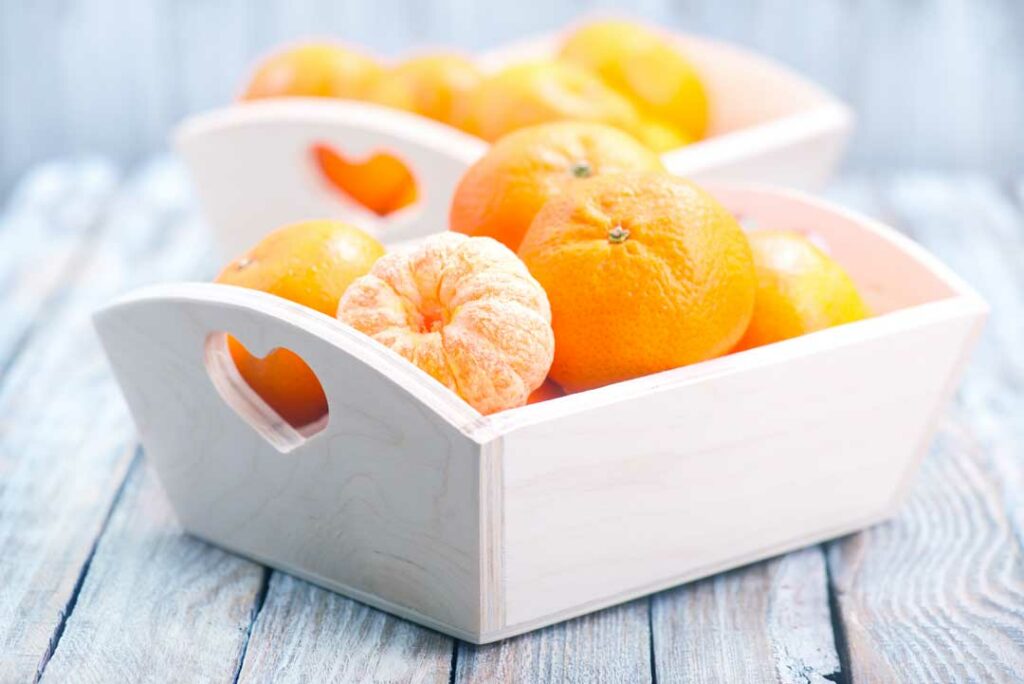
- Keep them at room temperature if you’ll eat them within 3–5 days.
- For longer storage, refrigerate in a mesh or open bag to allow airflow.
- Avoid sealing in plastic bags, as they may mold faster due to trapped moisture.
Mandarin vs Tangerine: What You Need to Know Before Buying
So, what’s the real difference between tangerines and mandarins? Tangerines are simply a type of mandarin, with a slightly tangier flavor, deeper color, and sometimes more seeds.
Mandarins, as a broader category, offer a range of options like clementines and satsumas that suit every palate and purpose. Whether you prefer the bold zip of a tangerine or the mellow sweetness of a Cutie, there’s a mandarin variety to fit your needs.
Next time you’re in the produce aisle, use this guide to pick the perfect citrus fruit. Visit the Citrus store locator to find fresh mandarins near you. Whichever you choose, you’re in for a juicy, vitamin-packed treat.
FAQs
Clementines are a mandarin variety and are often marketed as Cuties or Halos. They’re not technically tangerines but share many sweet, easy-peel traits.
No, both have similar nutritional profiles, low in calories (~47 kcal per 100 g), with high vitamin C and water content.
Tangerines (like Dancy and Sunburst) often have seeds; many mandarins, especially Clementines, are seedless or low-seed varieties.
Absolutely. Both are safe and easy for kids. Clementines/mandarins are popular for their mess‑free peel, sweet taste, and mild acidity.
Yes! Frozen mandarins become sorbet-like, and both juice beautifully for drinks and cooking.

Jessi is the creative mind behind The Coffee Mom, a popular blog that combines parenting advice, travel tips, and a love for all things Disney. As a trusted Disney influencer and passionate storyteller, Jessi’s authentic insights and relatable content resonate with readers worldwide.


